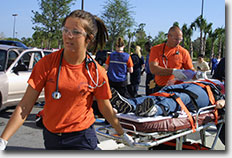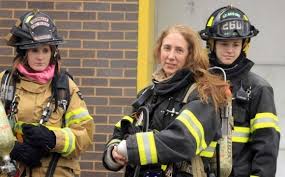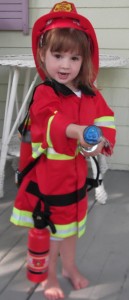In this latest installment of Reader “Mailbag” I’ve collected several of the reader comments in response to the blog post, The Sexual 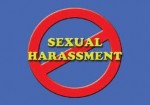 Assault and Rape of Women Firefighters: Survey Results. I gleaned the representative comments from across the various social media platforms where this blog appears, e.g., LinkedIn Groups, Facebook, and Twitter.
Assault and Rape of Women Firefighters: Survey Results. I gleaned the representative comments from across the various social media platforms where this blog appears, e.g., LinkedIn Groups, Facebook, and Twitter.
Steve Critten, Firefighter and property developer
Wow Robert those figures are horrendous! I would like to think that the figures would not be as bad in the UK but who knows for sure until similar research is done. As you are I am shocked and disgusted that a man in the same so called “caring profession” as myself could stoop so low. Hopefully your research can push forward some reform. Keep us updated.
Dr. Dave Baigent, Director at Fitting In
Is it possible to get the whole data set and your methodology/method Robert?
Robert Avsec (Me)
Dr. Dave, here is the link to the most current set of survey data, https://www.surveymonkey.com/results/SM-PVBF6XQ8/
I’ll be the first to admit that this is not a scientific survey. I created the survey and then distributed it through my blog. In addition, my blog posts (which included the survey link) were shared over a wide number of social media platforms: Facebook, Twitter, Google+, and LinkedIn.
On LinkedIn I shared via personal status updates as well as postings in the various LinkedIn Groups that I participate in: National Fire Academy Alumni and Students, Fire Chief, Fire Service Chief Officers, The Firefighter Network, Fire News, Executive Fire Officers, FireRescue1 Network, etc.
Thank you, Robert. Scientific or not it provides a snapshot that is significant.
Raymond Dumisa Vilakati, Chief Fire Officer at Swaziland Civil Aviation Authority
Thanks for bringing up this subject as a concern. This is really pathetic and a disgrace to us men. Why guys do you want to traumatize the precious gift God blessed us with? These are not people to be subjected to such disgusting acts that are inhuman and degrading. May God Almighty give us compassion.
Joseph Kenny, President at Safety Regulation Strategies, Inc.
Not one instance of this behavior is acceptable. I was, however, relieved (if that’s the right word) that there were only 59 respondents. Based upon reading your distribution list, I certainly hope and pray that this represents a very small percentage of our female FFs. Your opening comment says it all!
“…and I cannot comprehend the idea that the same men [celebrating Mother’s Day] who are treating the moms in their lives to flowers and cards and dinner are the same men who have sexually assaulted or raped their female colleagues in the fire station.”
This is certainly a topic that needs to be covered with new as well as in-service training.
Robert Avsec (Me)
Joe, thanks for joining the conversation. I fear, however, that the number of respondents to the survey has not been greater because women firefighters who’ve been a victim of sexual assault or rape do not want to relive the trauma, even for a 10 question anonymous survey on-line.
On one point I disagree: we don’t need new training or retraining for the troops. As I wrote in a previous blog, We Don’t Need Sensitivity Training…We Need More Leadership Training, the problem isn’t a training problem, it’s a leadership problem in too many fire and EMS organizations.
I cannot comprehend how these crimes can be taking place in the tight-knit environment of the fire station. Even when the perpetrator is the first-line supervisor, where is the “courage” of the other firefighters to stand up for what’s right? Courage is not just applicable on the fireground.
Dr. Dave Baigent (Again)
Almost everything that happens in a fire station is public knowledge amongst the firefighters. This applies to all bullying/harassment.
Charlie Murrell, Training Officer/Recruitment Officer at Baytown (TX) Fire Department
Good blog. It is sad that this happens and is still happening. There needs to be more positive results when incidents are reported as far as investigations being taken seriously.
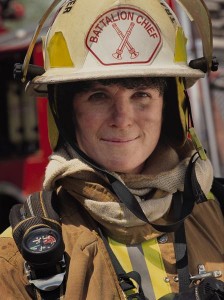 The good folks at the International Association for Women in Fire and Emergency Services reached out and shared some additional information with me regarding this disturbing subject. Between 2010-2013 iWomen has had 52 women firefighters contact them for advice and support concerning sexual harassment, sexual assault, and rapes that occurred to them while on the job. (I do not submit that these are 52 additional cases as some of these women may have also participated in my on-line survey).
The good folks at the International Association for Women in Fire and Emergency Services reached out and shared some additional information with me regarding this disturbing subject. Between 2010-2013 iWomen has had 52 women firefighters contact them for advice and support concerning sexual harassment, sexual assault, and rapes that occurred to them while on the job. (I do not submit that these are 52 additional cases as some of these women may have also participated in my on-line survey).
- Lawsuits were filed in Federal court (29 cases) and State courts (11 cases) with total judgments for the plaintiffs of $8,621,000 (An average award of $215,525 per plaintiff).
- One Equal Employment Opportunity Commission complaint was settled for $350,000
Did these departments and localities really have this kind of “extra” cash in their coffers to pay for the consequences of bad behavior and criminal activity on the part of their employees or members, many of whom were likely supervisors or managers?
In my survey, 70 percent of the respondents stated that they did not report their attack for a variety of reasons:
| I was too emotionally traumatized and felt ashamed | 36.5% |
| I feared physical reprisal from my attacker | 26.9% |
| I didn’t believe that my attack would be taken seriously | 44.2% |
| I believed that I would lose my job | 25.0% |
| I did not know what to do, so I did nothing | 21.2% |
| None of the above (If you select this answer, you please go on to Question #9) | 40.3% |
Table 1. Percentages total more than 100% as this survey question allowed for multiple responses to the question.
I’m curious about where the International Association of Fire Chiefs, the International Association of Fire Fighters, and the National Volunteer Fire Council stand on the sexual assault and rape of women in the career and volunteer fire service? I’m confident that members of those organizations have seen the previous blog posts from this site that have appeared on the social media platforms I mentioned at the beginning of this piece.
If you are a leader in a Fire and EMS department, you should feel very scared looking at these numbers because if they are to be believed we are only seeing the “tip of the iceberg” when it comes to the sexual assault or rape of women in the fire service. If “only” 30 percent of such incidents are being reported and adjudicated, and the judgments for those cases that are reported are resulting in significant financial consequences for fire departments and local government, that can only mean that there’s a very significant unmanaged risk out there. (The proverbial “ticking time bomb”).
So, what are you doing to ensure that the next “ticking time bomb” doesn’t go off in your department?
 Fire & EMS Leader Pro The job of old firefighters is to teach young firefighters how to become old firefighters!
Fire & EMS Leader Pro The job of old firefighters is to teach young firefighters how to become old firefighters!
